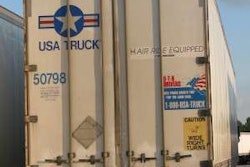The hours-of-service rules were the subject of debate during a daylong listening session Tuesday, Jan. 19, in Arlington, Va., the first of four being held across the country as the Federal Motor Carrier Safety Administration again considers changes to the regulations.
FMCSA is gathering public comment as it conducts another rulemaking regarding the hours-of-service regulations as part of an October 2009 settlement with groups challenging the current regulations. A federal appeals court twice has rejected the hours-of-service rules FMCSA has implemented since January 2004, and several groups have challenged the current regulations for allowing 11 hours of driving per shift and a 34-hour restart of cumulative on-duty limits.
The settlement with Public Citizen, Advocates for Highway and Auto Safety, the Truck Safety Coalition, and the International Brotherhood of Teamsters placed a hold on that litigation pending the completion of another rulemaking. Under the terms of the settlement, FMCSA must submit a notice of proposed rulemaking to the Office of Management and Budget within nine months, and the agency will have another 12 months to issue a final rule. Meanwhile, the current rules remain in effect.
Three remaining listening sessions will be held: today in Dallas, Jan. 25 in Los Angeles, and Jan. 28 in Davenport, Iowa. FMCSA officials say they are considering adding another session that will be limited to truck drivers.
Dave Osiecki, senior vice president of the American Trucking Associations, said at Tuesday’s session that a decade of extensive research and analysis proves that the current HOS rules should be retained, and that the government now has extensive data and information from several years of real-world operational trucking experience. “In the very real world of trucking, highway safety has improved in the past six years under these rules,” he said. The rules are an effective and balanced approach to promote driver alertness, he said, noting that FMCSA had made adjustments that minimized the economic costs of the rules without compromising highway safety, driver health or the industry’s productivity. One change should be made, Osiecki noted: “FMCSA should give serious consideration to encouraging circadian-friendly sleep and naps by providing flexibility in the sleeper berth provision.”
Safety concerns hypothesized by trucking industry critics and those groups opposed to the current rules have failed to occur in the real world, Osiecki said. Drivers generally are not driving 11 hours every day, but using the 11th hour when congestion, weather or unusual circumstances require it. A year ago, FMCSA refuted the hypothesis that drivers are driving the maximum number of hours possible in a day and in a week. “Absent new data, these predictions must continue to be rejected by FMCSA and the U.S. Department of Transportation and should, in no way, be a basis for any proposed changes,” Osiecki said. “In rulemaking and in litigation, FMCSA and DOT have said repeatedly that facts, not perception, must support the rules.”
Osiecki said that to better address the true causes of fatigue in transportation, FMCSA should focus its resources on (1) sleep disorder awareness, training and screening, (2) promoting the use of fatigue risk management programs, (3) increasing the availability of truck parking on important freight corridors, and (4) partnering with the trucking and shipping communities to develop an educational process that identifies for drivers the location of available truck parking.
LaMont Byrd, director of the Teamsters’ health and safety department, said the union opposes the provision that allows drivers to return to work after 34 hours off duty. “The agency issued a rule that favors increasing driver productivity and increasing the profits of motor carriers over driver health and safety,” Byrd said. “The current rules regarding hours of service, the 34-hour restart provision and the sleeper berth provision must be changed.”
Roughly one-third of the Teamsters’ 1.4 million workers are commercial drivers covered by the hours-of-service regulations. “We negotiated language into our collective bargaining agreements that prohibits the use of restart, except in rare situations, and those runs are negotiated with the employer on a case-by-case basis,” Byrd said.














